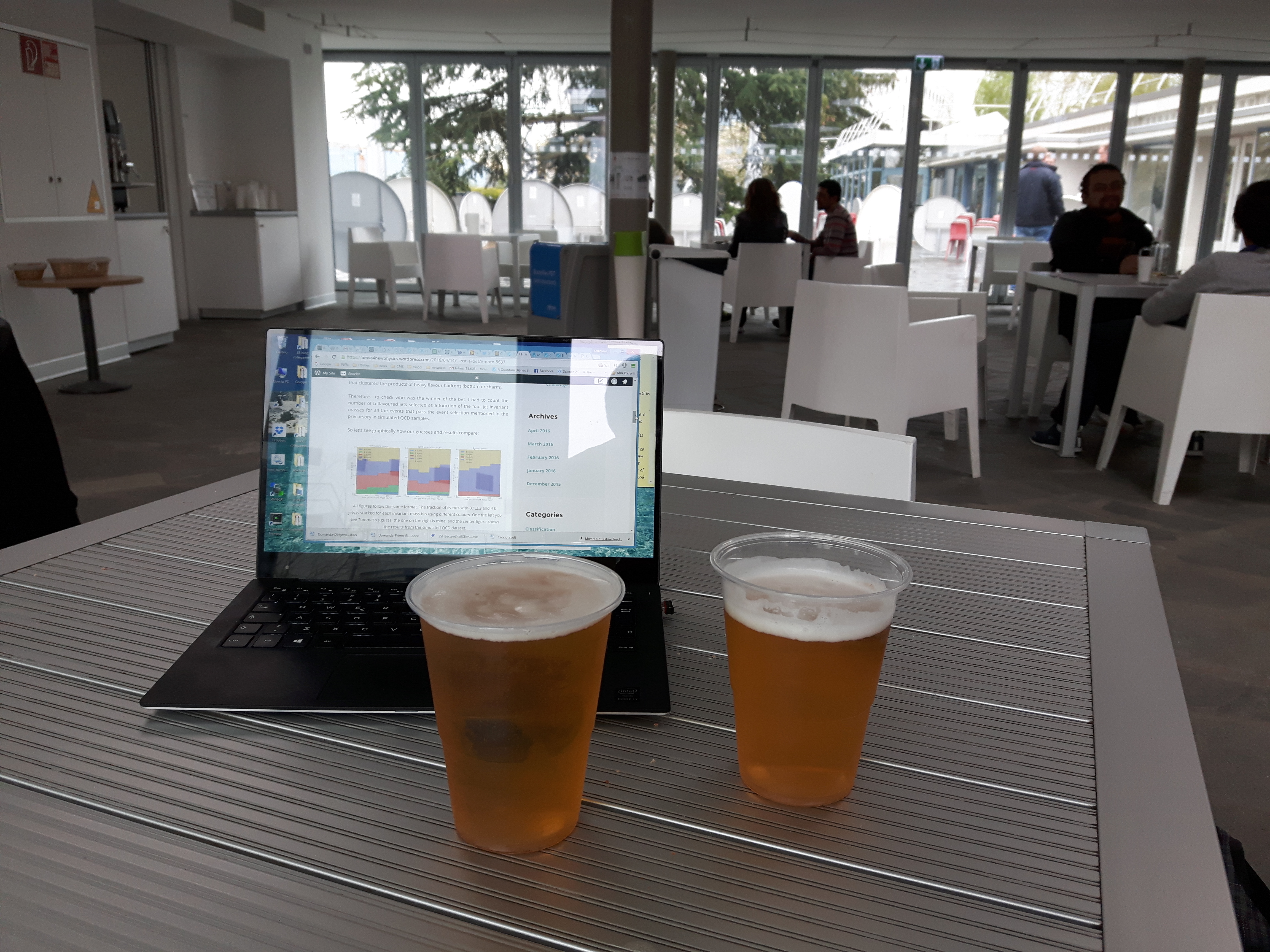No, this one was a rather more interesting bet, connected to the ability to predict a very specific property of a sample of collision data events. The detailed explanation of what I challenged my student to predict is given in the blog post that he himself wrote on the blog of our training network (a site you should definitely follow if you are interested in particle physics or machine learning). Rather than duplicating that here, let me explain why I challenged my student, ending up winning a good beer at the CERN cafeteria (see picture below).

(Above, the beers in front of the blog post written by Pablo, on the screen of my laptop).
Hadron-hadron collisions are really a complicated physical process to describe. Hadrons are composite objects made of quarks and gluons, and their inner structure is incredibly complex and we have not yet fully understood it, although we can model it rather precisely with Monte Carlo simulations. But even if you only had a quark hitting another quark the outcome would be very complicated to describe, and again the details of the process are not yet fully understood, although again we can model the resulting phenomena with simulations.
Simulations, simulations. If you constructed a device that emits sounds undistinguishable from those emitted by dolphins, would you say you have understood the language of those intelligent creatures ? Of course not. And yet, the process of creating computer programs capable of closely mimicking the outcome of real particle collisions does get us closer to understanding them.
But in truth we do not only have simulations. We have our brains. By considering the physics of particle collisions we know, and with a little bit of extrapolations and a pinch of creativity, we may sometimes manage to guess the detailed features of specific particle reactions or the response of our detector to this or that physical process. In fact, that is the part of my job I like the most. By asking myself questions on some dataset before looking at it, I can really gauge my understanding of the physics.
That is the real reason why I proposed to the PhD student who is working with me, Pablo de Castro, to guess what fraction of jets in a certain data sample were actually due to b-quark hadronization. We drew our predictions on two sheets of paper before spinning the data, and later checked how our predictions (mis)matched the truth. I think this guessing game is very useful to refine one's intuition about the properties of subatomic processes. And it is fun, too!





Comments